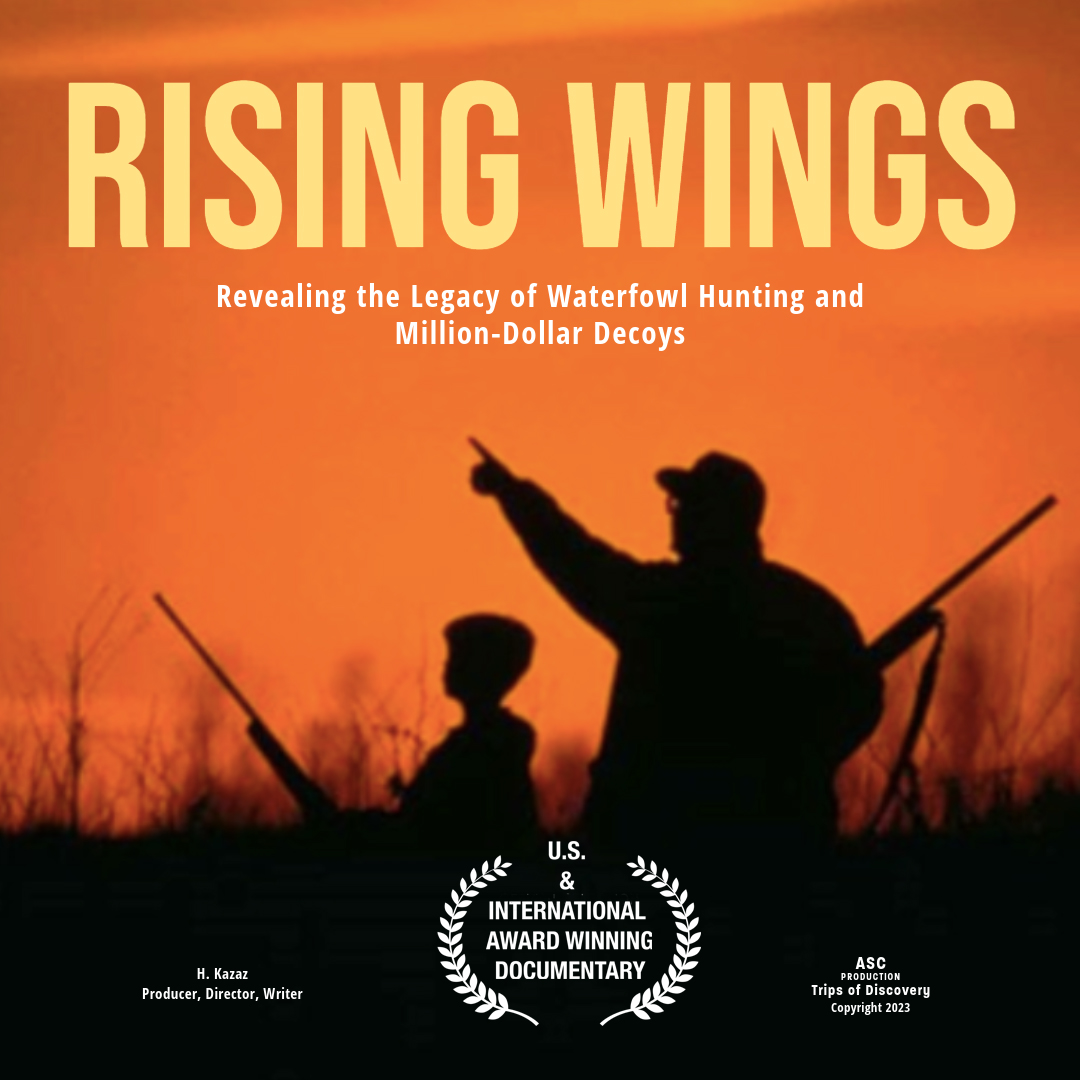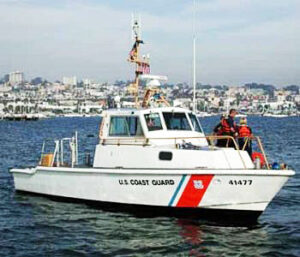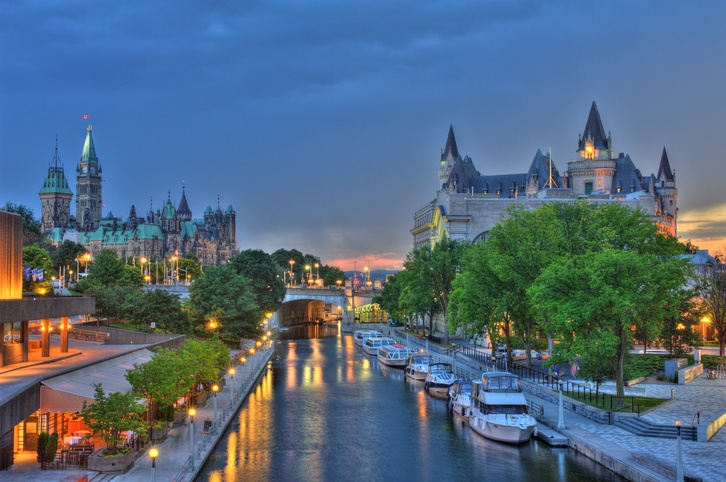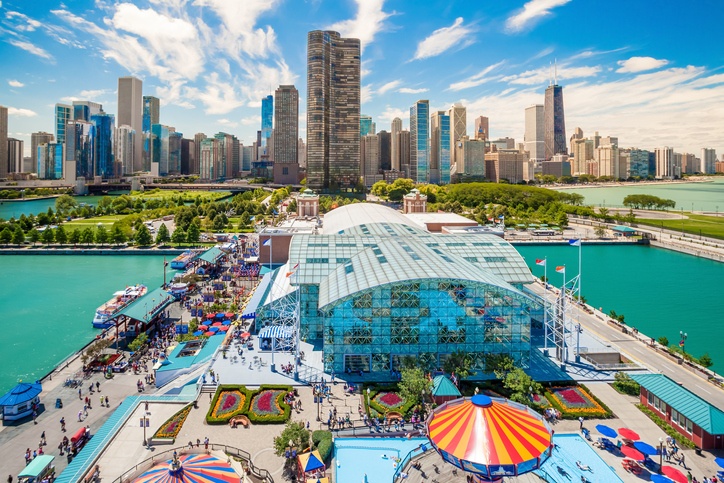Visit a mixing bowl of distant past and vibrant present – Annapolis, Maryland
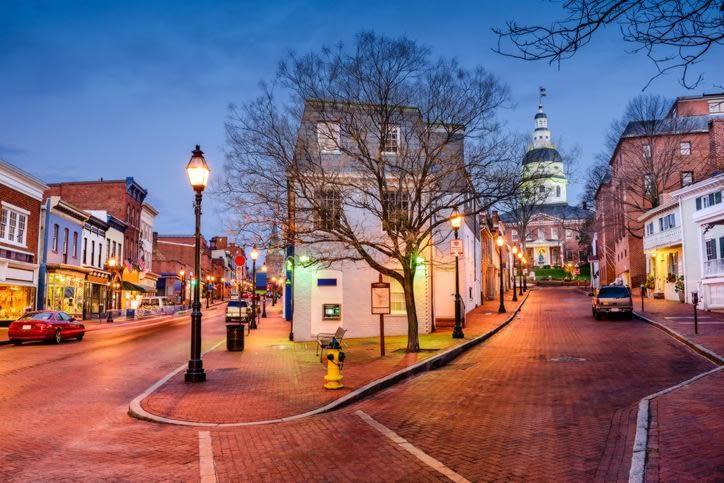
A historic city as seen from the eyes of Jeff Fleming, a brilliant young Chesapeake Bay photo artist and photojournalist
… Estimated Reading Time: 16 minutes – SBFL* 6 – PLANNED and VISITED – If you have never visited or have not been there lately by land or water to one of the jewels of the Atlantic Intracoastal Waterway (ICW), you really should. I am talking about the “Town at Proctor’s,” later called the “Town at the Severn,” and much later renamed “Anne Arundel’s Towne.” It was finally renamed “Annapolis” by the third Royal Governor of Maryland, Francis Nicholson after he moved the capital of the royal colony.
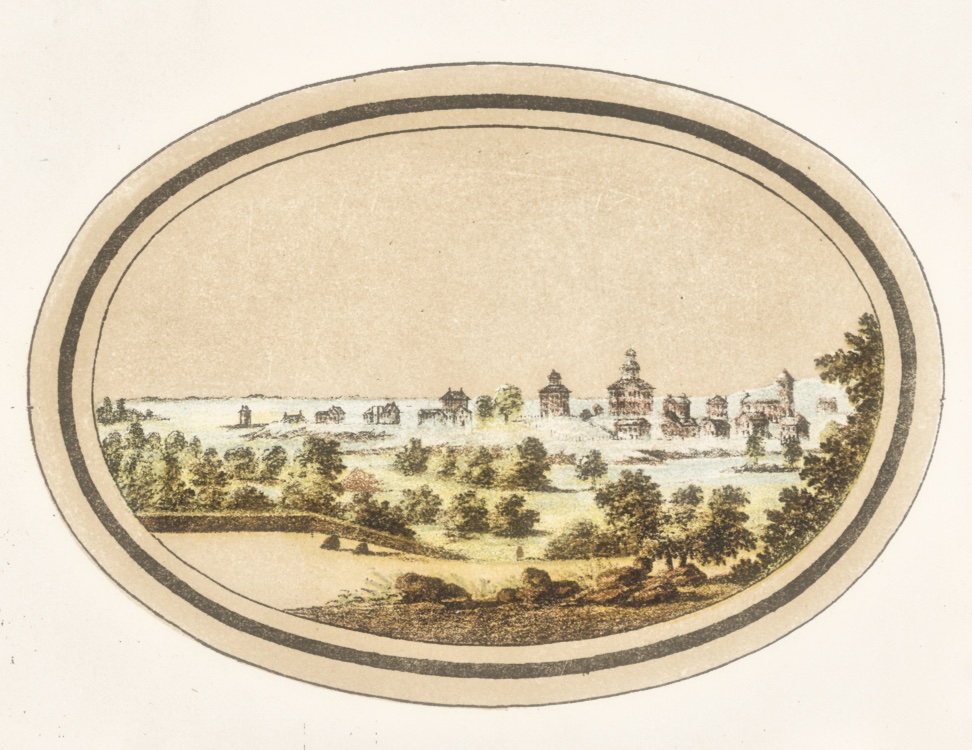
He renamed the town Annapolis after Princess Anne of Denmark and Norway, soon to be Queen Anne of Great Britain. Annapolis, one of the most historic towns in Maryland, was incorporated as a city in 1708. Today, it is designated as a UNESCO site.
We’re on a mission to discover what’s changed over half a century
We’re on a mission to find out about life on the Atlantic Intracoastal Waterway (ICW) and compare then and now, based on observations made by Dorothea and Stuart E. Jones in their 1958 National Geographic article titled, “Slow Boat to Florida” (hence the title of my SBTF* series here) and a 1973 book published by National Geographic, titled America’s Inland Waterway (ICW) by Allan C. Fisher, Jr.
Annapolis resident Fisher wrote about his city in 1973, saying, “My wife and I never tire of wandering about its narrow streets, many with houses so old and so tiny that they seem to huddle together for mutual protection against the 20th century. Most streets run down to the harbor, where oystermen sell their catches and fishermen and clammers tie-up among the yachts.” Referring to their life in the city, he said, “On Wednesday nights in summer we watch sailboats race from the Annapolis Yacht Club or from the sea wall of the Naval Academy. Each October, at the city dock, we attend those crowded, colorful spectacles, the U.S. Sailboat Show and the U.S. Powerboat Show.”
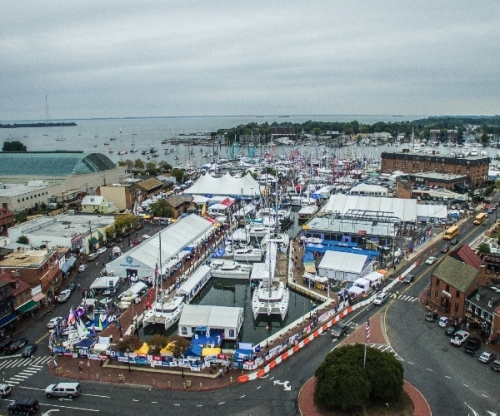
The Jones’ were also Annapolis residents. They started their Slow Boat to Florida trip from Annapolis in April 1958. Before they took off, they had an opportunity to do one more tour around the city. They wrote, “Mingling with midshipmen, we strolled narrow, hilly streets whose names carry the ring of colonial days: Duke of Gloucester, Prince George, Compromise, Cornhill, Shipwright.”
Then and now in Annapolis
What has changed since the observations made in 1958 by the Jones’ and 1973 by Fisher? Well, as a start, on July 6, 1976, the U.S. Naval Academy that was opened in October 1845 admitted women for the first time in its history, with the induction of 81 female midshipmen. In May 1980, Elizabeth Anne Rowe became the first woman member of the class to graduate.
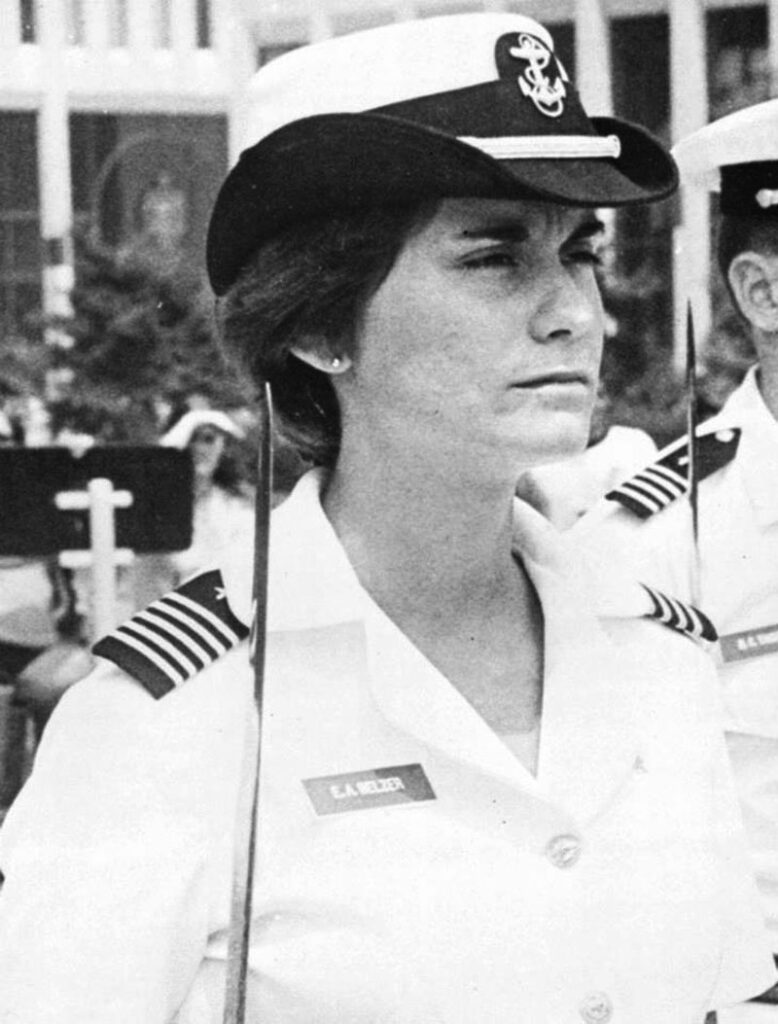
Elizabeth Anne Rowe, the first woman member of the USNA to graduate
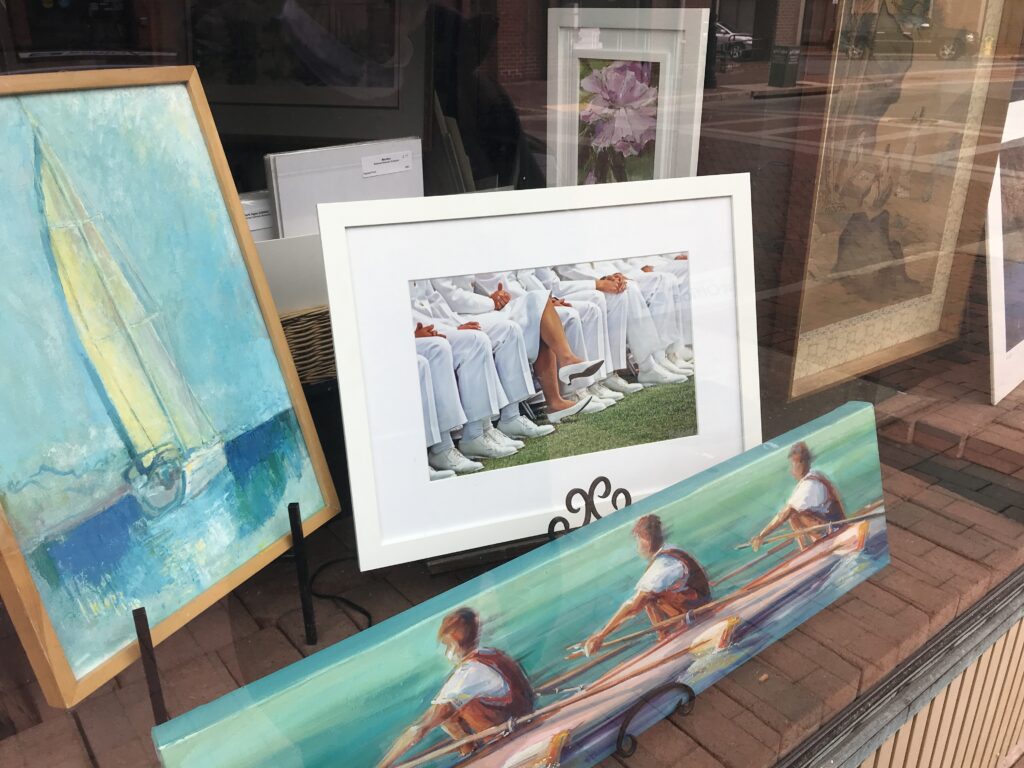
Long gone are the oystermen that Fisher wrote about in 1973 who were selling their catches in Annapolis harbor. Also gone are the fishermen and clammers tied up among the yachts. Today, the Annapolis City Dock offers slips and two separate bulkheads. Mostly, you see a few powerboats tied up to the bulkheads. There are dinghy docks located at 22 street endings, wherever any public street ends at the water. Also, the harbor has a large amount of both public rental and private annual mooring buoys available. The water taxis provide service to and from the buoys that are located near the harbor.
In 1965, “Olde Town” Annapolis was designated a Registered National Historic District. Restoration of many of its historic buildings began around that time. Today, the narrow streets and charming houses of old town Annapolis are still there, perhaps looking better than ever. It’s now filled with tourists, especially in the summer months. The Colonial Players were founded in 1949 by a group of Annapolitans who then purchased an old car repair shop on East Street in 1955 and turned it into a theater. It’s still there and is still delighting its audiences. The Annapolis Summer Garden Theater started its second season of all musicals in 1967 at 143 Compromise Street, near the harbor, and is still there and thriving.
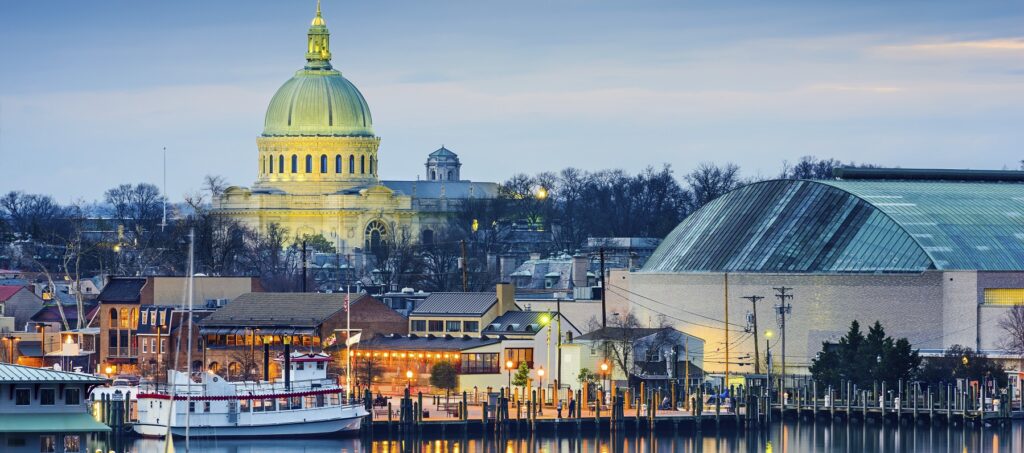
The US Naval Academy since 1845, the Annapolis Yacht Club since 1883, and each October those crowded, colorful spectacles, the U.S. Sailboat Show and the U.S. Powerboat Show that Fisher referred to, of course, are still there and still impressive.
Back in 1958, after visiting the Maryland State House, the Jones’ wrote, “We visited the Old Senate Chamber. Meeting in this room on December 23, 1783, the new Congress of the United States received George Washington’s resignation as commander in chief of the Continental army. A few weeks later, in this same chamber, Congress ratified the treaty of peace with Great Britain that officially ended the Revolutionary War.” Yes, the 18th Century State House and its 20th century annex of the Maryland State House is still there and remains a must-visit spot in Annapolis.
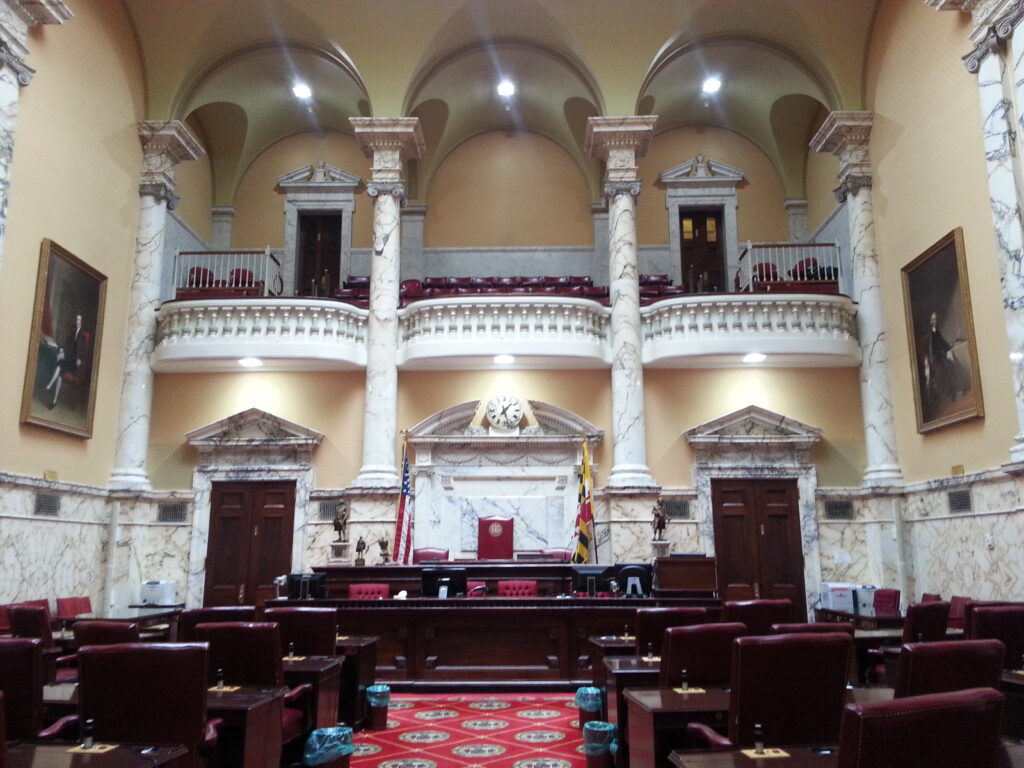
One of the oldest academic buildings in continuous use in the country is at St. John’s College, a liberal arts college in Annapolis since 1784 that is still providing an outstanding education for students. Every year, thousands of visitors flood the campus in the spring for a storied croquet match between the St. John’s Johnnies and the U.S. Naval Academy Midshipmen.
Let’s also not forget the What’s Up? Annapolis Magazine. It has been covering the Annapolis area since 1997. It’s a one-stop local entertainment magazine for activities, sports, restaurants, special events, and lifestyle in Annapolis, the Greater Chesapeake region, and the Eastern Shore.
On the change front, the newest addition to West Street in Annapolis will soon be added. The Maryland Theater for the Performing Arts, a 65,000-square-foot performing arts and conference center, will be located at Park Place in the heart of the Annapolis Arts and Entertainment District. The facility will feature a 1,200-seat main stage with premier acoustics and state-of-the-art live streaming technology.
Jay Fleming, the young, gifted face of early 21st century Annapolis
Annapolis, a picturesque town and a mixing bowl of old and new enjoying an arts district with countless gifted artists, has long been an art mecca. However, there is one photo artist and photojournalist that clearly stands above the rest in Annapolis. His name is Jay Fleming, a young and gifted face of Annapolis.
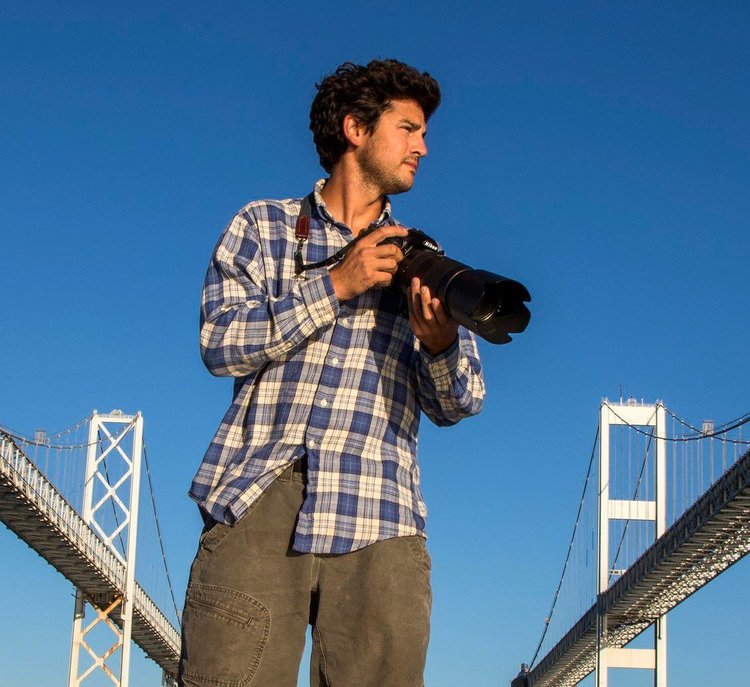
Jay’s passion and dedication to Annapolis and the Chesapeake Bay is a cut above many. He is not just creating photo art, but uniquely capturing life in the Chesapeake Bay in the early 21st century as an artist photojournalist. His work, indirectly, is a visual history, a gift to generations to come. Jay’s first book, “Working the Water,” now in its 3rd printing, is a smashing success by any measure. It is a visual narrative of the lives of those individuals whose livelihood is directly dependent upon the Chesapeake Bay—America’s largest estuary.
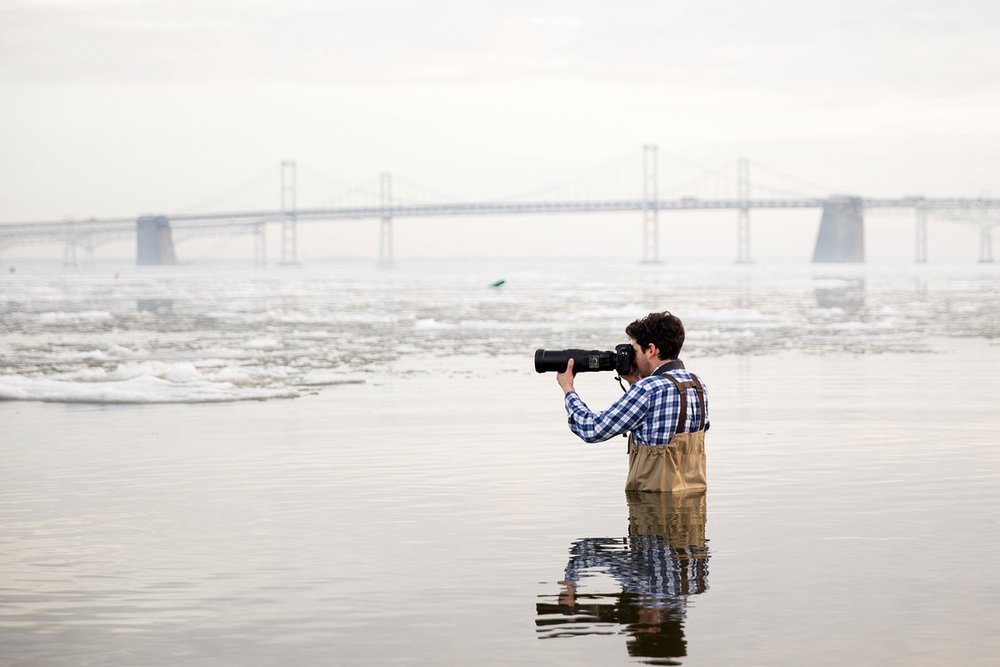
Jay Fleming has been taking photographs since age 13. His father, Kevin Fleming, was a National Geographic photographer. He was born and grew up in Annapolis, very close to the water. He had a kayak at a young age, did sailing, had a little zodiak—just spent a lot of time on the water. Eventually, he gravitated to exploring the seafood industry, the working side of the Chesapeake Bay, to document how people interact with the Bay and the natural resources the Bay has to offer. He says when he’s on the water, he feels a complete sense of freedom. You can go anywhere—no double yellow lines, no traffic lights, no stop signs. It’s just you and the water.
In 2013, Jay started to formulate ideas about his first book, “Water Project.” He spent three years documenting all aspects of the Bay’s rapidly changing seafood industry. His highly successful book was published in fall of 2016. It’s a visual story of a day working on the water, from 2013 to 2016. Jay’s documentation of the iconic seafood industry proved to be an incredibly powerful educational tool in raising awareness for the people and the processes involved with bringing commonly-consumed seafood products to market.
Eye of a young master
He is a very special Annapolis native, born in 1987. He looks at the world with an entirely different eye. I am sure that he, too, sees the world as we all do; however, he also sees certain slices of life that we may just not notice or walk by. That is what makes Jay unique and different. His pictures are not just snapshots of a moment or something in our lives. It is for this reason that Jay’s stunningly beautiful photographs have been on the cover of countless magazines.
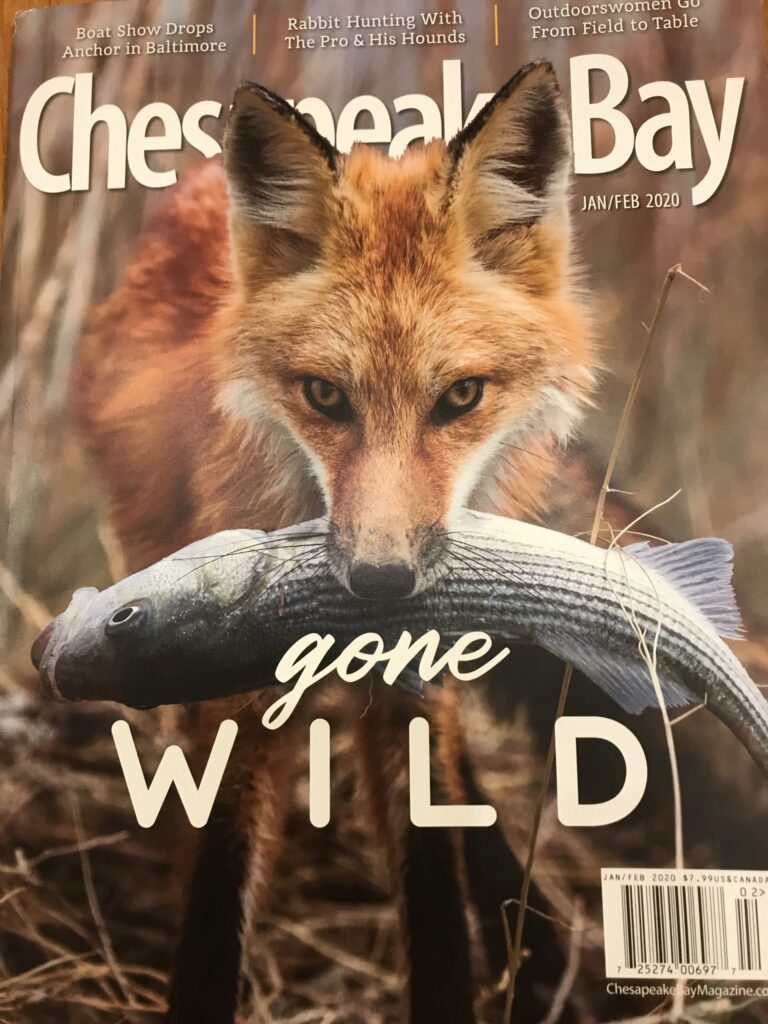
His ability to tell a story in a single shot makes him not just a photo artist and photojournalist, but also a brilliant visual storyteller. Jay’s unique ability to create photos transcends art, journalism, and social commentary. He visually captures daily life without shouting and draws the viewer into a world that may or may not be familiar. He takes you on a journey. Jay does not stop there: storytelling in a single shot is also reflected in his commercial photography work.
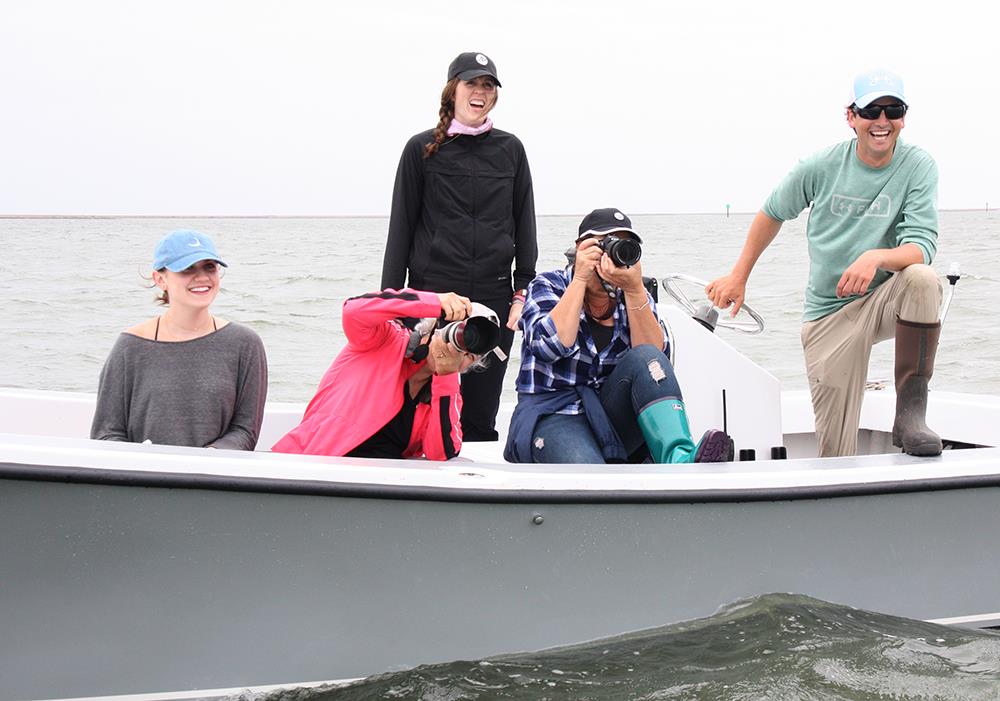
Here is a tip for you. If you are a photography enthusiast, explore and learn from Jay Fleming, a young master. You do not want to miss a chance to attend Jay’s unique and exclusive photography workshops. Hurry, Jay’s photography workshops in 2020 are almost sold out.
Observing change from a photographer’s eye
For this post, I visited Jay Fleming in his studio at the Maryland Hall for Creative Arts in Annapolis. It’s an unassuming space with tall windows that cast strong light into the studio. Other walls display his large-sized, framed iconic photographs. He is a humble, energetic 30-something who you’d want to be friends with. If you bumped into him on the street, you wouldn’t think that he is a young master of the photographic arts.
As a matter of fact, I first bumped into him on a late December night in a large pop-up Christmas shop on West Street. He was demonstrating shucking oysters to a curious group of shop visitors.
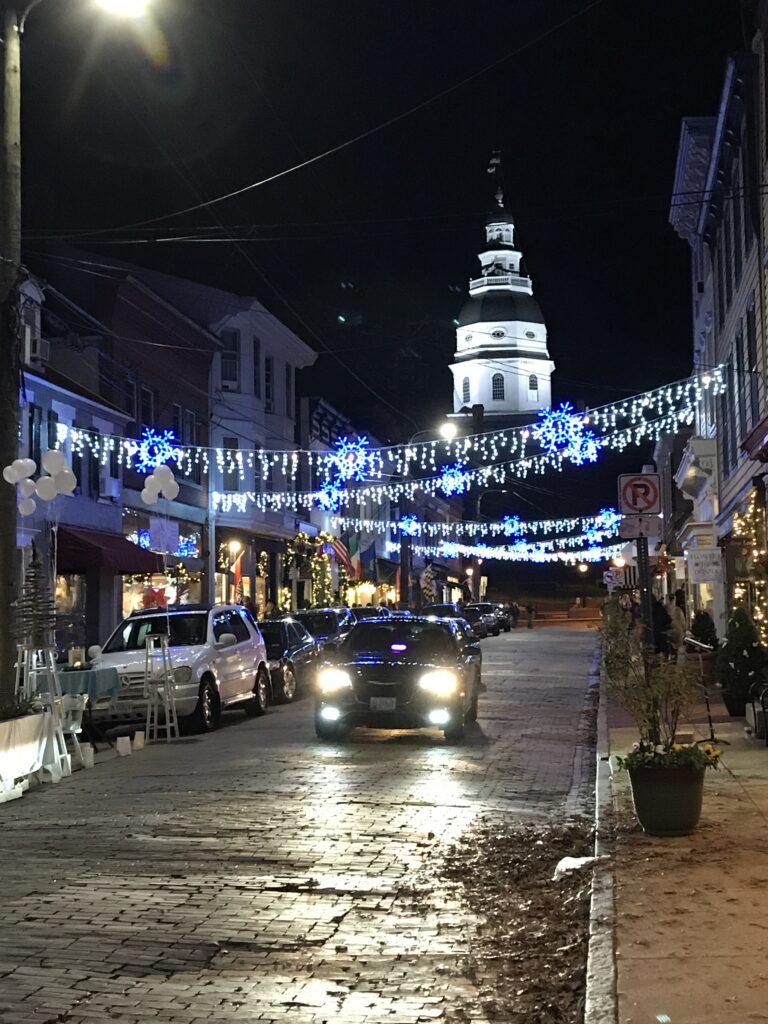
I did not think too much of the activity and walked by until one highly-excited woman told me that she was surprised to see Jay Fleming, a famous young photographer, in the store shucking oysters. I walked over, standing behind the crowd, searching for evidence of his photography. I was not going to be impressed just because a woman had told me he was great. That was until I noticed his book on the side. I opened it and glanced through it. Within the first couple of pages, I realized that it was not possible for me to not get impressed and feel a deep respect for Jay’s work.

When I entered his studio in early February, he was just finishing up an informal meeting with someone who had one of his latest, supersized, large iconic prints, the Chesapeake Bay fox with a fish in its mouth. I’d seen the same picture earlier in the latest issue of Chesapeake Bay Magazine, also published in Annapolis. We started talking. I asked Jay if he could recall one thing that has changed significantly in Annapolis, from the time that he was aware of his surroundings to this date. Jay responded, “There are a lot more people here, numberwise.” I continued, “What about the look and feel of the town?” His response was that from the time that he was able to realize what was going on in the world around him, a lot of things had already changed. Before, he remembered the working waterfront of Annapolis and the work boats tied up on the narrow channel of the mini Annapolis Harbour area. By the time he realized that things were changing, the changes had already taken place. He said, “They were no longer there. The area became less of a waterfront downtown. That’s just an example. Annapolis became less of a working community, more of a tourist destination with restaurants, shops, that type of thing.”
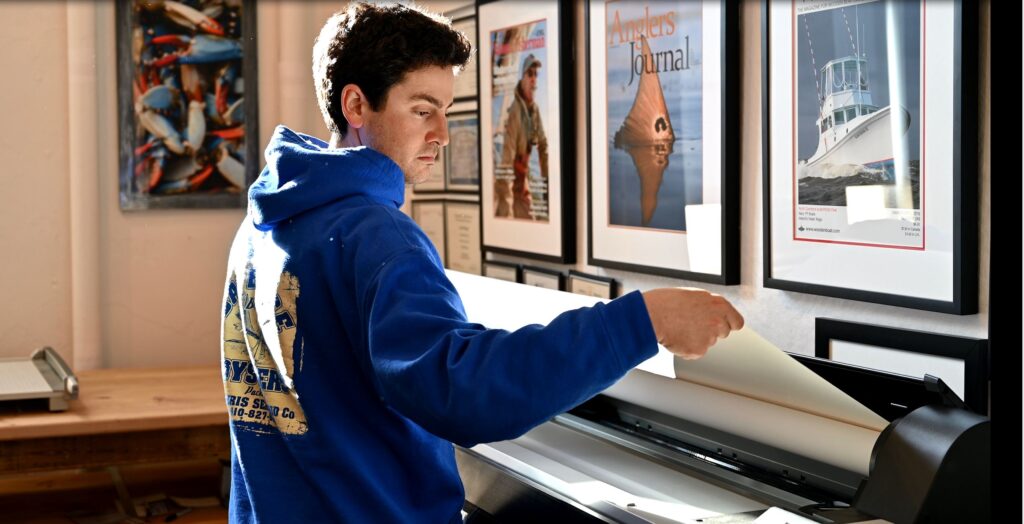
How does a young person know how was it before their time? Jay refers to the obvious, but certainly, his impressions are more vivid. He said he learned about the history of Annapolis primarily through other people’s pictures, through looking at old pictures. He said, “I learned the past by looking at pictures of Ego Alley, the waterfront, the rivers, and seeing how little development there was. And also talking to people who were from here and whose families had been here for multiple generations. That gave me a better idea of how much Annapolis has truly changed. It really just boils down to more people wanting to be here, more people wanting to visit and live here.”
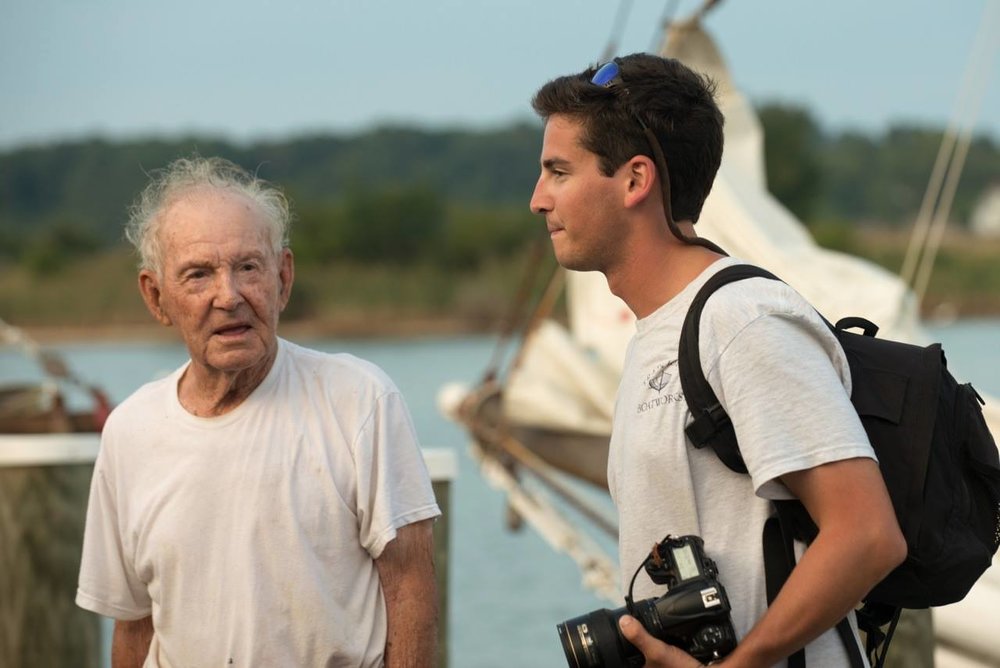
By the way, the “Ego Alley” that Jay is referring to is a small, narrow waterway that leads to the inner harbor at the heart of the city. It got its name from the endless parade of boats and yachts that traverse this dead end canal, usually only to see and be seen. On one side of the waterway, there is the Marriott Waterfront Hotel, complete with their famous restaurant and bar. The outdoor tables are literally inches from the water and provide the best perch from which to view all the action. On the same side, but facing Spa Creek, is the famous Annapolis Yacht Club. On the other side of Ego Alley, there are boat slips and several water taxi stands, along with a few restaurants.
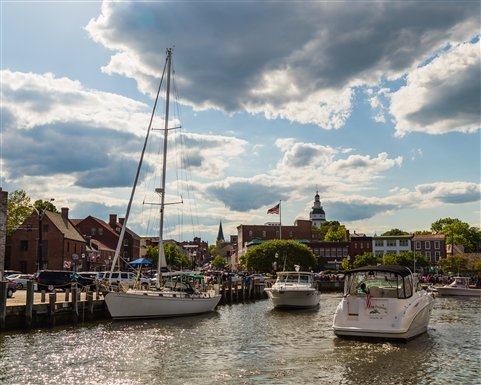
Speaking of his beloved town, Jay says, “Annapolis is a great place and for me, it is an incredible location because I can access the water from my house, and then I can go to places, like go over to the Eastern Shore in a short amount of time.” I asked him to elaborate further about the changes in Annapolis. He said, in general, there are more people using the water. Jay said, “I have noticed that in my lifetime, there aren’t as many fish and crabs, like when I first started using the water to go fishing, crabbing, and that type of thing. Fewer people were on the water doing that and I was able to catch more of what I was targeting.” Talking matter-of-factly, he said it’s just more and more people competing for diminishing Chesapeake Bay resources on the water. I asked where he sees himself being in the future. Jay replied, “This is my home. This is where I’ll be.”
How might change look like 50 years from now?
Hoping that one day, 50 years from now, someone else would make the same Slow Boat to Florida journey as I am doing now and record the changes, I asked Jay if he could project how the next 50 years of changes might look. Jay said, “Well, I think it’s been going in this way for a long time, for decades. But I think that there’s more people out there who are competing for the land, the fish, the oysters, the crabs, etc. So there’s more people in the watershed, which means more pressure on everything and more pressure on the water quality. And I think the pressure on the Chesapeake Bay is going to continue. This may sound like a cynical point of view, but you know, the Chesapeake Bay is going to continue to deteriorate from what it was from a research perspective, from a resource perspective, and from just an overall environmental quality perspective.” He realized that a lot of people want to move to the area and population trends show it continuing to rise; the Annapolis metropolitan area will be significantly larger in the future.
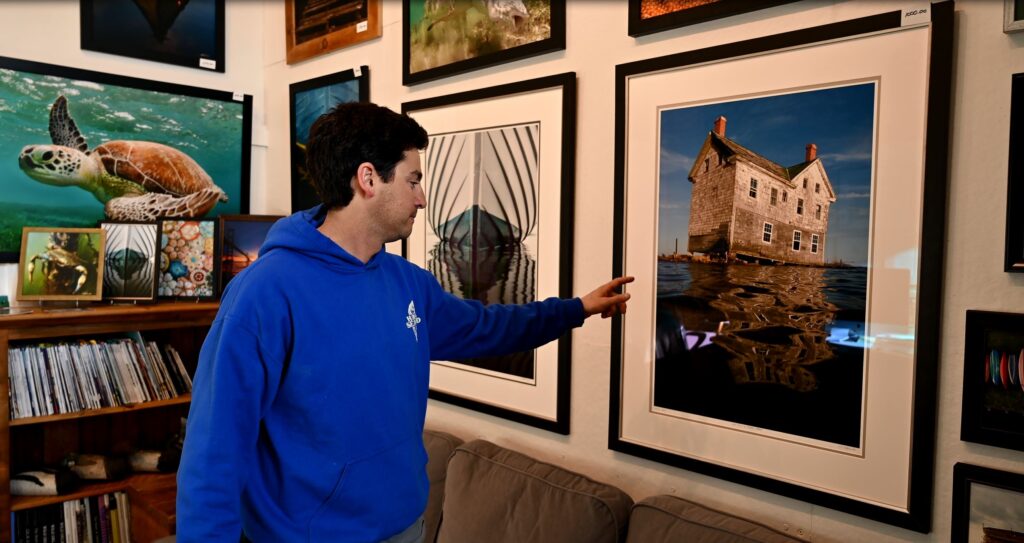
Jay said, “There’s definitely going to be some big, big changes in the Chesapeake Bay in the next 50 years. Not that it hasn’t changed a lot over the last 50 years either, so it’s always going to continue to change, but there’s just going to be more people in the watershed.“
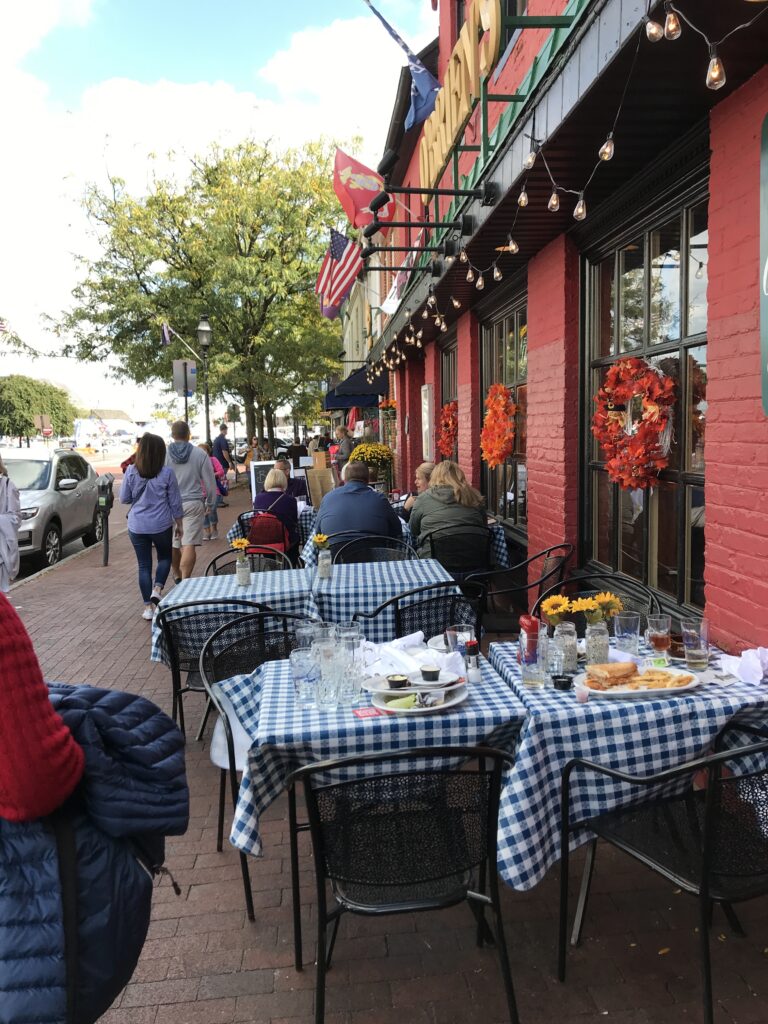
Population shift and friendships
I asked Jay what it was like growing up in Annapolis, related to friendships and so on, and what has changed? His response was reminiscent of many small towns that are struggling to keep their way of life in the face of the population shift that started in the late 20th century and is continuing in this century. However, Annapolis is lucky in that a lot of people want to be there or want to visit it. Jay said, “In terms of friends from my childhood, I’d say a lot of people, a lot of kids have moved away, but there’s been a handful that have stayed around in the area. I mean, job opportunities pop up for people. Not everybody has the ability to work where they were born or not everybody wants to live where they were born. I’m lucky that my job does allow me to stay here because I do like Annapolis.”
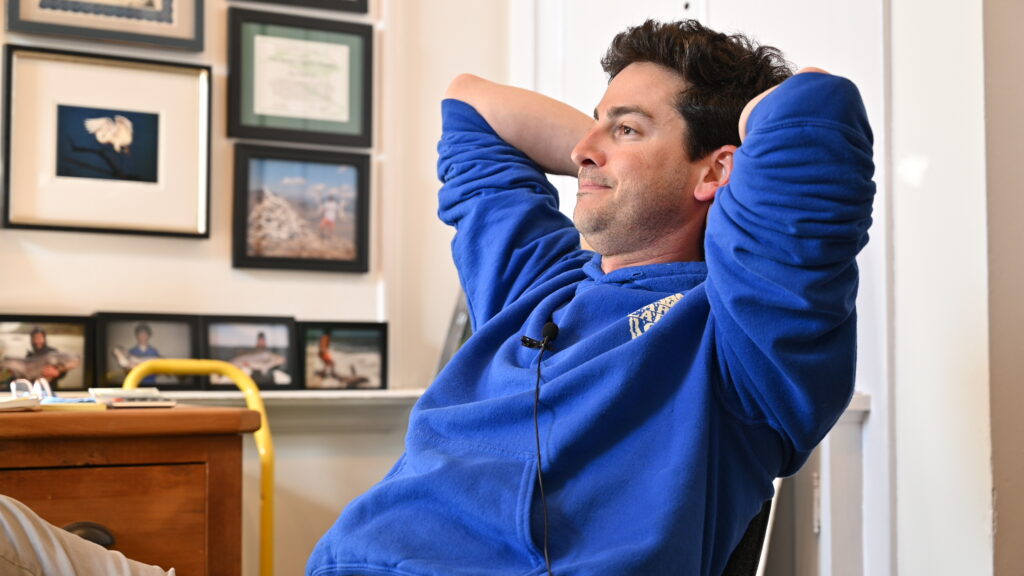
Well, that’s it for now. I hope to say hello to you and shake your hand if you spot my boat, Life’s AOK, in one of the locations that I am visiting during 2020.
I bid you Fair Winds and Following Seas.
2 things I learned
- Annapolis has changed from a small town whose private sector focused on watermen into a charming tourist town, showcasing American history and architecture, as well as great restaurants and boutiques. Tour boats will also take you out on the Chesapeake Bay, which is always delightful.
- The U.S. Naval Academy is well worth a visit. They have a great public tour. Something you may not know, the Blue Angels—the U.S. Navy’s famous fighter jet demonstration team—performs a fly-over and airshow at every graduation.
5 things I recommend
- 10 things to do in Annapolis
- Yes, summers are fun in Annapolis, but also make sure not to miss Christmas time in the old town.
- If you are a photography enthusiast, explore and learn from Jay Fleming, a young master. You do not want to miss a chance to attend Jay’s unique and exclusive photography workshops. Hurry, Jay’s photography workshops in 2020 are almost sold out.
- Take the Discovery Annapolis Tours. Don’t miss the trolley that leaves the Visitor’s Center on West St. The narrated 60-minute tour of the old town is a great way to get an overview of the town’s history, architecture, and culture.
- Cruise the Bay with Watermark boat.
How easy?

Marina where you can tie up your boat
- While it would be hard to find a spot on the Annapolis City Dock on an on-demand basis, there are ample mooring buoys available in the Annapolis Harbor. They are not too far from the City Dock and serviced by Water Taxis or you can take your dinghy to the shore. There also anchorages that are available in the waters of Severn River, Weems Creek, Spa Creek, and Back Creek.
Places to stay, besides your boat
*SBFL stands for Slow Boat to Florida. It is a series of my blog posts, which started with a posting that had the same title. Each numbered heading has two parts. The first is “Planned,” and when we visit the planned location, a “Visited” label appears at the beginning, next to SBFL. The essence of this series is not to seek new lands and exotic cultures. Rather, it is to cover our journey of discovery (hence the title of our blog Trips Of Discovery) that has to do with seeing with a new eye the coastal locations of the Atlantic Intracoastal Waterway (ICW) where present-day America started to flourish. The SBFL series represents part travel, part current and historical anthropological highlights of selected locations and coastal life. We’re comparing then and now, based on observations made by Dorothea and Stuart E. Jones in their 1958 National Geographic article titled, “Slow Boat to Florida” and a 1973 book published by National Geographic, titled America’s Inland Waterway (ICW) by Allan C. Fisher, Jr. We also take a brief look at the history of the locations that I am writing about. Finally, we bundle it up with our observations during our actual visits to the locations and our interviews with local residents. Think of it as a modest time capsule of past and present. My wife and I hope that you, too, can visit the locations that we cover, whether with your boat or by car. However, if that is not in your bucket list to do, enjoy reading our plans and actual visits as armchair travelers anyway. Also, we would love to hear from you on any current or past insights about the locations that I am visiting. Drop me a note, will you?
